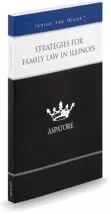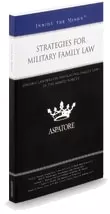(a) General rule. No gain or loss shall be recognized on a transfer of property from an individual to (or in trust for the benefit of):
(1) a spouse, or
(2) a former spouse, but only if the transfer is incident to the divorce.
(b) Transfer treated as gift; transferee has transferor’s basis. In the case of any transfer of property described in subsection (a)
(1) for purposes of this subtitle, the property shall be treated as acquired by the transferee by gift, and
(2) the basis of the transferee in the property shall be the adjusted basis of the transferor
(c) Incident to divorce. For purposes of subsection (a)(2), transfer of property is incident to the divorce if such transfer
(1) occurs within one year after the date on which the marriage ceases, or
(2) is related to the cessation of the marriage.
(d) Special rule where spouse is nonresident alien. Subsection (a) shall not apply if the spouse (or former spouse) of the individual making the transfer is a nonresident alien.
(e) Transfers in trust where liability exceeds basis. Subsection (a) shall not apply to the transfer of property in trust to the extent that –
(1) the sum of the amount of the liabilities assumed, plus the amount of the liabilities to which the property is subject, exceeds
(2) the total of the adjusted basis of the property transferred. Proper adjustment shall be made under subsection (b) in the basis of the transferee in such property to take into account gain recognized by reason of the preceding sentence.
Incident to Divorce Defined:
A transfer of property is incident to the divorce where the transfer occurs not more than one year after the date on which the marriage ceases, or the transfer is related to the cessation of the marriage. Thus, a transfer of property occurring not more than one year after the date on which the marriage ceases need not be related to the cessation of the marriage to qualify for section 1041 treatment.
Transfer of Property and Cessation of Marriage:
Transfer of property is treated as related to the cessation of the marriage if the transfer is pursuant to a divorce or separation instrument, as defined in section 71(b)(2), and the transfer occurs nor more than 6 years after the date on which the marriage ceases. A divorce or separation instrument includes a modification or amendment to such decree or instrument. Any transfer not pursuant to a divorce or separation instrument and any transfer occurring more than 6 years after cessation of the marriage is presumed to be not related to the cessation of the marriage. This presumption may be rebutted only by showing that the transfer was made to effect the division of the property owned by the former spouses at the time of the cessation of the marriage. For example, the presumption may be rebutted by showing that:
1) the transfer was not made within the one and six year periods described above because of factors which hampered an earlier transfer of the property, such as legal or business impediments to transfer or disputes concerning the value of the property owned at the time of the cessation of the marriage; and
2) the transfer is effected promptly after the impediment is removed.
Transfer of Property to Third Parties:
There are three situations in which a transfer of property to a third party on behalf of a spouse (or former spouse) will qualify under section 1041, provided all other requirements of the section are satisfied. The first situation is where the transfer to the third party is required by a divorce or separation instrument. The second is where the transfer to the third party is pursuant to the written request of the other spouse (or former spouse). The third situation is where the transferor receives from the other spouse (or former spouse) a written consent or ratification of the transfer to the third party. Such consent or ratification must state that the parties intend the transfer to be treated as a transfer to the non transferring spouse (or former spouse) subject to the rules of section 1041 and must be received by the transferor prior to the date of filing of the transferor’s first return of tax for the taxable year in which the transfer was made. In the three situations described above, the transfer of property will be treated as immediately transferring the property to the third party. The deemed transfer from the non-transferring spouse (or former spouse) to the third party is not a transaction fat qualifies for non-recognition of gain under section 1041.
Transferor of Property and Income Tax:
The transferor of property under section 1041 recognizes no gain or loss on the transfer even if the transfer was in exchange for the release of marital rights or other consideration. This rule applies regardless of whether the transfer is of property owned by the transferor or is a division (equal or unequal) of marital property.
Case Law:
Keller v. Keller, 877 S.W.2d 192 (Mo. App. 1994)
· Trial court was required under the IRC to use as ex-wife’s basis upon sale of the former marital residence the original tax basis husband and wife had in the home, rather than ex-wife’s basis at the time of dissolution.
· Note: the court referenced § 1041 in saying that property exchanges incident to dissolution are nontaxable events to the parties, and parties must carryover the original basis in property exchanged and use such basis in computing capital gain or loss in the event of a sale.
Spousal Support Taxation
Maintenance payments are included in the gross income of the recipient spouse and are deductible from the income of the payor spouse. This means that payors want as much of support as possible to be in the form of alimony and recipients want as much of support as possible to be in the form of child support. Additionally, when the payor’s income is considerably higher than that of the recipient, there may be an advantage to both spouses to paying alimony rather than child support, because tax advantages of alimony allow the payor to increase the after-tax support level to the recipient. However, it is important to be aware that there are restrictions that can be a trap for those that over characterize support as alimony. One such restriction tests to make sure that alimony is not “front loaded” – that is, too concentrated in the period immediately after divorce.
26 USCA § 215
(a) General rule. In the case of an individual, there shall be allowed as a deduction an amount equal to alimony or separate maintenance payments paid during such individual’s taxable year
(b) Alimony or separate maintenance payments defined – For purposes of this section, the term “alimony or separate maintenance payment” means any alimony or maintenance payment (as defined in § 71(b)) which is includable in the income of the gross income of the recipient under § 71.
(c) Requirement of identification number – the Secretary may prescribe regulations under which
(1) any individual receiving alimony or separate maintenance payments is required to furnish such individual’s taxpayer identification to the individual making such payments, and
(2) the individual making such payments is required to include such taxpayer identification number on such individual’s tax return for the taxable year in which such payments are made.
(d) Coordination with § 682 – No deduction shall be allowed under this section with respect to any payment, if by reason of § 682 (relating to the income of alimony trusts), the amount thereof is not includible in such individual’s gross income.
26 USCA § 71 – Alimony and Separate Maintenance Payments
(a) General rule – Gross income includes amounts received as alimony or separate maintenance payments.
(b) Alimony or separate maintenance payments defined. For purposes of this section –
(1) In general: the term “alimony or separate maintenance payment” means any payment in cash if –
(a) such payment is received by (or on behalf of) a spouse under a divorce or separation instrument,
(b) the divorce or separation instrument does not designate such payment as a payment which is not includible in gross income under this section and not allowable as a deduction under § 215,
(c) in the case of an individual legally separated from his spouse under a decree of divorce or of separate maintenance, the payee spouse and the payor spouse are not members of the same household at the time such payment is made, and
(d) there is no liability to make any such payment for any period after the death of the payee spouse and there is no liability to make any payment (in cash or property) as a substitute for such payments after the death of the payee spouse,
(2) Divorce or separation instrument. The term “divorce or separation instrument” means
(a) a decree of divorce or separation maintenance or a written instrument incident to such a decree,
(b) a written separation agreement, or
(c) a decree (not described in subparagraph A) requiring a spouse to make payments for the support or maintenance of the other spouse
(c) Payments to support children
(1) In general – Subsection (a) shall not apply to that part of any payment which the terms of the divorce or separation instrument fix (in terms of an amount of money or a part of the payment) as a sum which is payable for the support of the children of the payor spouse.
(2) Treatment of certain reductions related to contingencies involving child. For purposes of paragraph (1), if any amount specified in the instrument will be reduced –
(a) on the happening of a contingency specified in the instrument relating to a child (such as attaining a specified age, marrying, dying, leaving school or similar contingency), or
(b) at a time which can clearly be associated with a contingency of a kind specified in subparagraph (a) – an amount equal to the amount of such reduction will be treated as an amount fixed as payable for the support of the children of the payor spouse.
(3) Special rule where payment is less than amount specific in instrument. For purposes of this subsection, if any payment is less than the amount specified in the instrument, then so much of such payment as does not exceed the sum payable for support shall be considered a payment for such support.
(d) Spouse. For purposes of this section, the term “spouse” includes a former spouse.
(e) Exception for joint returns. This section and § 215 shall not apply if the spouses make a joint return with each other.
(f) Recomputation where excess front-loading of alimony payments (see Common Income Tax Considerations below)
Children and Taxes:
Claiming children as a tax exemption is a matter that is determined by the Internal Revenue Code. Federal tax law provides that the parent with primary physical custody or the parent who the children live with for more than half the year are entitled to claim the children as a tax exemption. Interpreting this definition between parents who have a joint custody agreement can be difficult. Child Support Payments are not included in the income of the recipient spouse and are not deductible from the income of the payor spouse. Additionally, the parent who has custody of the children is entitled to claim a credit from 20% to 30% of work-related child care, up to a maximum of $960 for two or more children under the age of 13. Unlike the exemption, the child care credit cannot be traded and it is available only to the custodial parent.
Relevant Case Law:
Thorp v. Thorp, 390 S.W.3d 871 (Mo. App. 2013)
· The trial court’s order requiring father to pay more in child support each month after he was awarded the dependent tax exemption.
· Tax exemptions are or may be a relevant factor in determining the money available to pay child support obligations
Jeffus v. Jeffus, 375 S.W.3d 862 (Mo. App. 2012)
· The trial court’s award to husband of federal dependency exemptions for minor children did not preclude offsetting wife’s dependent care expenses with a federal tax credit, in calculation of child support award in favor of wife.
· This award was consistent with federal law.
Taxes in Divorce, http://divorceinfo.com/taxes.htm, (last visited Feb. 5, 2016).





